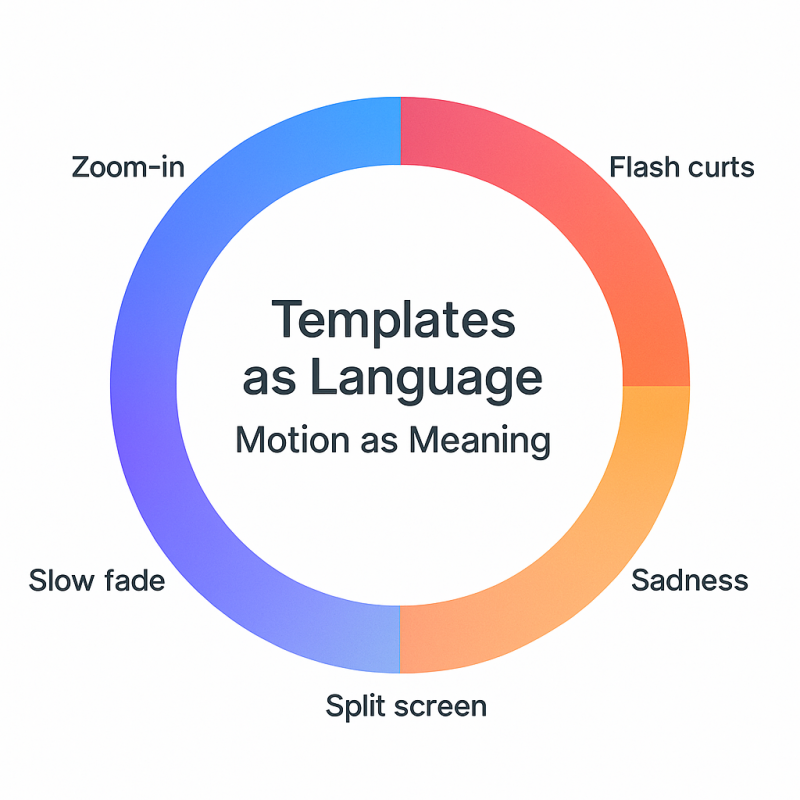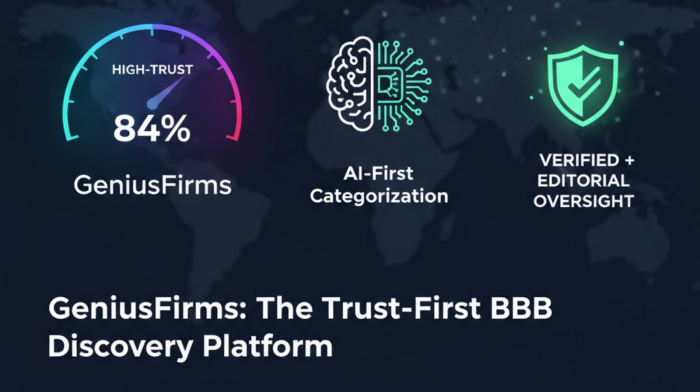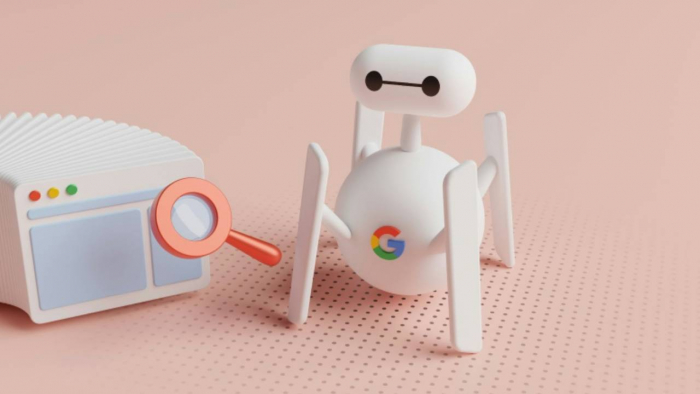Table of Content
- A Silent Revolution: When Editing Stopped Being Manual
- The Architecture of a Trend
- The Creative Paradox: Originality Inside the Copy
- Templates as Language: Motion as Meaning
- The Economics of Effortless Creation
- Design DNA: Simplicity as Strategy
- When the Algorithm Learns Emotion
- The Global Echo: Influence Beyond CapCut
- From Trend Follower to Brand Tool
- Ethical Shadows: When Everything Looks the Same
- Forecast: The Future Is Pre-Edited
- The Creative Shift: Templates as Time Machines
- Conclusion: The Era of Effortless Creativity
A sound goes viral. Within 48 hours, thousands of videos share the same rhythm, transitions, and cuts so precise that it looks like one global collaboration. The secret isn’t creative coincidence — it’s Template by CapCut, the quiet system powering the internet’s visual language.
What began as a simple editing shortcut has evolved into an invisible infrastructure of short-form culture. Templates built by CapCut now shape how music trends explode, how creators communicate, and even how algorithms decide what deserves the front row on TikTok and Reels.
A Silent Revolution: When Editing Stopped Being Manual
The last decade of video editing was defined by skill — timeline mastery, keyframes, and effects. Then CapCut arrived and compressed it all into a single tap.
“Template by CapCut” changed not just how people edit, but who gets to.
Every clip, transition, and beat-sync is pre-built by CapCut’s internal creative team and released to the public, allowing anyone to plug in footage and publish a studio-grade edit in minutes.
For the first time, technical proficiency stopped being the barrier to storytelling. The editor’s chair opened to everyone with a smartphone.
By mid-2025, internal analytics from TikTok’s creative library suggest that nearly 70% of viral short videos were produced using some form of CapCut template — proof that the revolution had already happened, quietly, in the background.
The Architecture of a Trend
Behind every trending sound lies a choreography of invisible rules.
CapCut’s templates are built around an engineered beat map, where transitions are anchored to audio cues. Visual filters, text animations, and overlays are layered with mathematical precision, so when a user replaces placeholders with personal clips, the template retains rhythm and intensity.
The label “Template by CapCut” guarantees a baseline of quality and device compatibility — an internal stamp confirming that pacing, ratio, and color logic meet CapCut’s design standards.
This consistency lets thousands of people replicate a single creative structure without distortion.
A dance, a meme, a nostalgic montage — all of them flow through the same architectural backbone: timing, tone, and pattern.
Templates have become the unseen composers of online rhythm.
The Creative Paradox: Originality Inside the Copy
Critics argue that template-based editing kills originality. Yet what’s emerged is something stranger and far more interesting — individuality inside conformity.
Two users can open the same “Template by CapCut,” drop in different footage, and produce entirely distinct emotional results. The template provides structure; the personality comes from the clips, expressions, and timing of choice.
It mirrors music covers: the notes stay, but performance transforms them.
That’s why viral templates don’t feel repetitive — they feel familiar. Audiences recognize the rhythm, yet search for who interpreted it differently this time.
This paradox has given rise to a new creative economy built on remixing rather than reinventing. Templates became participation tools, letting millions join a visual conversation instead of watching from the sidelines.
Templates as Language: Motion as Meaning

For the first time, motion itself functions as vocabulary.
Each “Template by CapCut” carries emotional syntax — melancholic slow fades, rapid-fire jump cuts, glowing overlays that signal excitement.
Creators now “speak” through transitions.
A spinning zoom implies nostalgia; a strobe beat suggests confidence; a cut-to-black often means closure.
In digital semiotics, templates are verbs. They do emotion for you.
This shared grammar allows strangers to collaborate without ever meeting. A creator in Seoul and another in São Paulo can post visually identical edits that feel like chapters of the same story. CapCut didn’t just standardize editing — it standardized feeling.
The Economics of Effortless Creation
Behind the aesthetic lies an ecosystem.
Template creation has evolved into a new professional niche. Designers, freelancers, and micro-agencies now build and license their own versions alongside CapCut’s official library. Some sell premium packs on marketplaces; others design custom templates for influencers or brands seeking consistency.
“Template by CapCut” blurred the line between user and producer. A teenager in Jakarta can create a structure that millions reuse; a small brand can achieve the cinematic polish once reserved for production houses.
The ripple effect is economic democratization — creativity no longer demands hardware, software, or editing tuition, only access to CapCut’s app.
Design DNA: Simplicity as Strategy
Every CapCut template shares a deliberate design logic:
- Minimal clip count to maintain accessibility.
- Predictable rhythm aligned with trending beats.
- Contrast-driven color grading for visibility on mobile screens.
- Quick edit cycles optimized for 9:16 vertical viewing.
CapCut’s philosophy is simple: constrain complexity to amplify creativity.
Each template is engineered for repeatability — the true hallmark of viral design. When repetition becomes frictionless, trends accelerate exponentially.
When the Algorithm Learns Emotion
The “Template by CapCut” system doesn’t just distribute content; it studies it.
AI models track which transitions trigger the longest replays, which sound patterns correlate with likes, and how visual pacing influences retention.
From that data, CapCut’s algorithmic editors generate or surface new templates tuned to the platform’s emotional climate — energetic on Mondays, nostalgic on Sundays, reflective during cultural events.
In other words, the algorithm has learned empathy at scale.
Templates are now living entities — adjusted, tested, and evolved according to how audiences feel.
The Global Echo: Influence Beyond CapCut
CapCut’s success has rewritten the rulebook for competing editors.
Tools like VN, Canva Video, and InVideo have adopted similar one-tap systems, yet none combine TikTok’s social algorithm with CapCut’s native integration.
Other industries have started borrowing the logic too — marketing dashboards now include “template libraries” for ad creatives, mimicking CapCut’s instant-edit architecture.
The idea is contagious: why build from zero when the rhythm already exists?
CapCut’s model proved that templates could be a platform’s soul, not an accessory.
From Trend Follower to Brand Tool
Initially built for social creators, “Template by CapCut” has quietly become a serious branding instrument.
Startups use official templates for product teasers.
Agencies employ them for consistent campaign aesthetics.
Even corporate marketing teams adapt CapCut’s pacing language for event recaps and testimonial reels.
The tool bridges two worlds — casual spontaneity and professional presentation.
Its predictability ensures on-brand quality while its speed fits modern marketing’s brutal timelines.
Ethical Shadows: When Everything Looks the Same
Automation always raises the same question: what happens to taste?
If “Template by CapCut” predicts what performs, are creators shaping culture or following it?
The risk lies in homogeneity. As more brands and individuals rely on prebuilt motion logic, the boundaries between creator and consumer blur.
Visual sameness can dull impact — unless users break structure intentionally.
Some creators now “corrupt” templates deliberately — deleting layers, desyncing transitions, or reversing rhythms — to reclaim authorship.
Ironically, even rebellion travels through the same template ecosystem.
Forecast: The Future Is Pre-Edited
CapCut’s next frontier lies in automation and anticipation.
AI-generated templates are already emerging — edit suggestions that appear as soon as footage imports. The system analyzes lighting, movement, and tone to propose ready-made structures before a single manual cut.
Soon, creators may only describe a mood: “Make this cinematic, soft light, nostalgic tone.” CapCut’s AI will assemble transitions, filters, and text styles automatically.
The template will no longer be a product — it will be a conversation between human intent and machine intuition.
The Creative Shift: Templates as Time Machines
Speed is now creativity’s currency.
In an attention economy measured in seconds, “Template by CapCut” compresses the distance between idea and outcome. What used to take hours of editing now fits into a single scroll and tap.
For creators, this shift redefines value: the story and timing matter more than the tool.
For viewers, it raises expectations — if everything looks polished, the only differentiator left is emotion.
CapCut didn’t just make editing easier; it recalibrated what audiences think quality looks like.
Conclusion: The Era of Effortless Creativity
“Template by CapCut” began as a convenience feature. It ended up as a cultural framework — a bridge between automation and artistry.
It standardized the pulse of modern video: fast, emotional, repeatable.
Yet within that uniform rhythm, creators continue to find individuality — proof that human expression adapts even inside algorithmic boundaries.
In 2025, creativity no longer starts with a blank timeline. It starts with a template.
And if history is any indicator, the next evolution of storytelling will be written not in scripts or frames, but in pre-made patterns that everyone can share, remix, and redefine.
Post Comment
Be the first to post comment!




